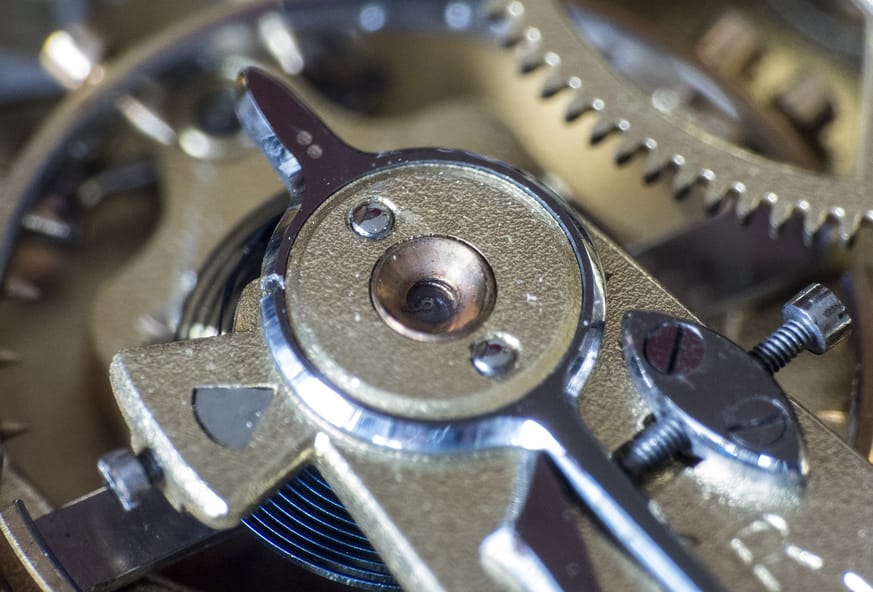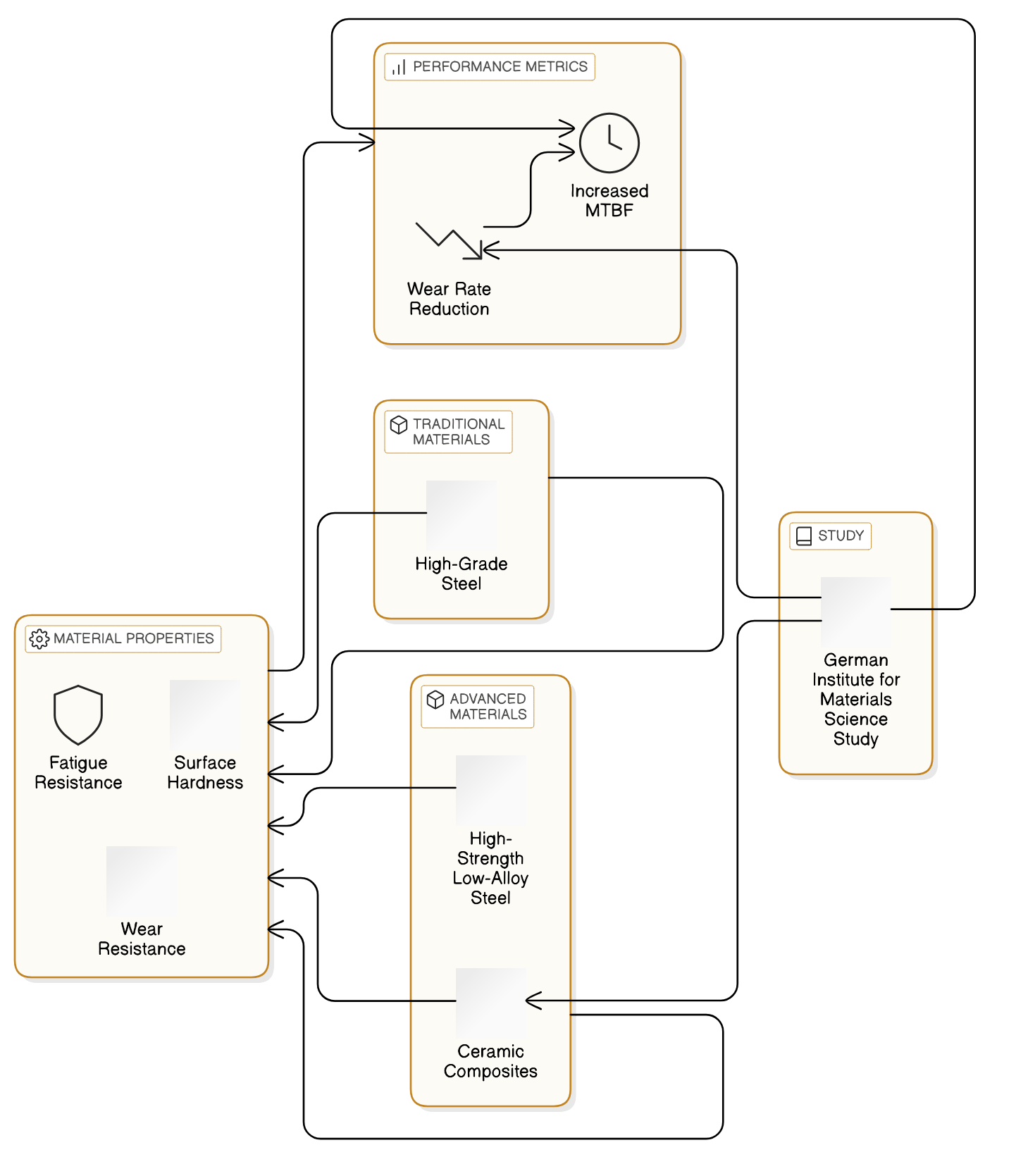Summary
This article explores the latest advancements in bevel gear precision, highlighting their significance for machinery professionals aiming to improve efficiency and durability. Key Points:
- Additive manufacturing techniques like selective laser melting (SLM) are revolutionizing bevel gear production by enabling complex designs and optimizing gear profiles for better performance.
- Advanced surface treatments such as laser peening and PVD coatings significantly enhance the durability and efficiency of bevel gears, extending their service life while reducing friction.
- Digital twin technology and AI/ML integration provide real-time monitoring and predictive maintenance capabilities, ensuring optimal performance and minimizing downtime.
What Makes Bevel Gears So Crucial in Precision Machinery?
My First Bevel Gear Project: A Tale of Trial and Error
As I dove into machining, things spiraled quickly. I miscalculated the angles—5 degrees off! The gears clashed during the initial test fit; it felt like a punch to the gut. “No way this is right!” I exclaimed, glaring at the parts that just wouldn’t mesh.
By Wednesday afternoon, two sets of gears lay scrapped in front of me. Metal shavings were everywhere—it looked like a war zone. Sarah peeked over and shot me a skeptical look, asking, “You sure you can fix this?” Her tone made me second-guess myself entirely.
“Honestly? Didn’t think it’d be this hard,” I admitted as frustration bubbled inside me. Each mistake weighed heavy—but somehow, deep down, I knew every setback was part of learning how to master bevel gear precision. In that chaos… we all stood frozen for a moment—wondering if we could pull this off after all.
| Feature | Traditional Bevel Gears | Powder Metal Bevel Gears | Spiral Bevel Gears | Hypoid Gears |
|---|---|---|---|---|
| Manufacturing Process | CNC Machining, Grinding | Sintering Process | CNC Machining, Gear Hobbing | CNC Machining, Gear Hobbing |
| Tooth Shape Options | Straight and Helical Teeth | Varied Tooth Shapes Based on Design Needs | Helical Teeth for Smoother Operation | Curved Teeth for Efficient Power Transmission |
| Precision Level | High Precision with Tolerances of ±0.005 inches or better | Very High Precision with Tolerances as low as ±0.001 inches | High Precision for Optimal Torque Transfer and Load Distribution | High Precision Ideal for Heavy-Duty Applications |
| Common Applications | Automotive, Aerospace, Industrial Machinery | Robotics, Medical Devices, Custom Machinery | Automotive Drivetrains, Marine Applications | Heavy Equipment, Automotive Differentials |
The Turning Point: Overcoming Initial Bevel Gear Challenges
Sarah leaned against her workstation, arms crossed. “You sure you can fix this?” she asked again, her voice low and hesitant. It wasn’t just doubt; it felt like a challenge. Others glanced up from their tasks—some flipping through manuals while others just sat there, staring blankly at their screens as if waiting for inspiration to strike.
“Something feels off,” one of my teammates mumbled under his breath, breaking the silence. He was right; we all sensed it. But what? We couldn’t pinpoint it—not yet anyway.
The clock ticked loudly on the wall as frustration simmered beneath our focused surfaces. Each passing minute felt like another layer of pressure piling on top of me. I wanted to scream or maybe laugh—it was hard to tell which impulse would win out in that moment. Then… just like that, no one spoke again; all we could do was look at each other and wonder how we were going to dig ourselves out of this mess.
Our Approach to Precision Bevel Gear Design and Manufacturing
“We tried new simulations last week,” recalled Sarah, her brow furrowed. “But the results were still off by 0.02 mm from what we needed.” Some nodded in agreement while others exchanged skeptical looks.
“Perhaps if we adjust the machining speed during production…” someone proposed hesitantly, but doubt lingered in their tone. As ideas floated around like leaves caught in a breeze, uncertainty hung thick in the air—no one was quite sure if these changes would yield better results or just lead us deeper into trouble.

 Free Images
Free ImagesFrequently Asked Questions about Bevel Gear Precision
These methods are changing the game for bevel gear production. For instance, they allow manufacturers to create complex geometries and internal features that were previously impossible with traditional machining techniques. Imagine being able to design gears with optimized tooth profiles that not only enhance load-bearing capacity but also reduce noise and vibration – that's a significant improvement!
I remember when I first learned about SLM-produced bevel gears; the surface roughness values can be as low as 0.5µm! This is way better than what conventional machining methods typically achieve. 💡 A little tip: this level of precision means you get smoother operations and improved overall performance.
Moreover, AM makes it easier to integrate lightweighting features into gear structures, such as internal channels for cooling or lubrication. This innovation leads to enhanced efficiency while also reducing weight – a win-win situation! The gains in precision, performance, and design flexibility are simply remarkable.
In summary, advancements in additive manufacturing are not just incremental changes; they represent a paradigm shift in how we think about designing and producing bevel gears. If you're involved in machinery design or manufacturing, keeping an eye on these developments could open up new avenues for innovation!
Beyond the Basics: Exploring Advanced Bevel Gear Design Considerations?
The Balancing Act: Precision vs. Cost in Bevel Gear Production?
Practical Steps for Achieving Bevel Gear Precision in Your Projects
Achieving precision in bevel gear manufacturing is essential for ensuring optimal performance in machinery applications. This guide outlines practical steps that integrate advanced methodologies, providing you with a roadmap to enhance your gear precision significantly.
Many professionals, including myself, have encountered the challenges of maintaining sub-micron tolerances during gear production. It's often surprising how traditional methods can leave room for error—this is where modern techniques come into play. By adopting an integrated approach that combines real-time measurement and AI-driven adjustments, we can drastically improve our outcomes.
#### Step-by-Step Guide
**Step 1: Set Up Advanced Metrology Tools**
Before you begin machining, ensure that you have access to high-precision metrology tools like laser scanning interferometry. This technology allows for the real-time monitoring of tooth profile deviations throughout the shaping or grinding processes. (Pro tip: I recommend calibrating these tools at the start of each project to avoid any inaccuracies.)
**Step 2: Implement Closed-Loop Control Systems**
Integrate a closed-loop control system into your CNC machines. This system should utilize AI algorithms to process data from your metrology tools and automatically adjust cutting parameters as necessary—minimizing manual interventions and errors along the way.
**Step 3: Select Appropriate Tooling Materials**
Use advanced tooling materials such as CBN (Cubic Boron Nitride) or PCD (Polycrystalline Diamond). These materials provide superior wear resistance and thermal conductivity, which are crucial when working on high-precision components. Remember, using quality tooling can greatly reduce final gear profile errors.
**Step 4: Monitor Process Parameters Closely**
During machining operations, keep an eye on critical parameters such as feed rate and spindle speed. Adjustments may be required based on feedback from your metrology systems. (I personally set reminders every hour to check these parameters; it helps maintain consistency.)
**Step 5: Assess Results Frequently**
After machining each batch of gears, conduct thorough inspections using your metrology equipment to assess their profiles against desired specifications. If deviations occur, analyze collected data to identify trends or recurring issues—it’s much easier to resolve problems early than after post-processing corrections.
#### Advanced Techniques and Reminders
If you're looking to take your precision efforts even further, consider exploring predictive modeling techniques that complement your existing systems. For instance, utilizing simulation software can help anticipate potential failures before they occur.
Additionally, if time permits after achieving initial success with these methods, delve into machine learning applications within your workflow for even more refined predictions over time—this could yield significant long-term benefits!
By following these steps and leveraging advanced technologies in bevel gear manufacturing processes, you'll not only enhance precision but also contribute positively to overall machinery performance—a win-win situation!

The Future of Bevel Gear Technology: What`s Next?
Mastering Bevel Gear Precision: A Summary and Call to Action
As this trend gains momentum, it's essential for professionals in the field to adapt and leverage these innovations. Embracing predictive maintenance not only enhances operational efficiency but also positions your organization as a leader in the precision machinery sector. So now is the time to take action—explore how these technologies can be tailored to your specific needs and start implementing them within your operations. The future of bevel gear precision awaits; let’s not miss out on this opportunity for transformation!
Reference Articles
Bevel Gear Co., LTD | ISO 9001 Precision Gear Manufacturer
High precision gear manufacturer more than 30 years and specialized in spiral bevel gears, bevel gear, hypoid gear, worm ...
Source: Bevel Gear Co., LTDBevel Gear Manufacturing | Custom High-Precision Bevel Gears Supplier
Specialized bevel gear manufacturing services offering high-precision, custom bevel gears for various industrial applications.
Source: Shanghai Belon Machinery Co.,ltdBevel Gear Manufacturer
We are a manufacturer of powder metal bevel gears by sintering process, which can be classified according to tooth shape, straight ...
Manufacturing of High-precision Bevel Gears with Five-axis Machining
As the tooth surface of a bevel gear has complicated curves, bevel gears are mostly manufactured by using exclusive gear cutting machines. The general ...
Source: komatsu.jpOEM ODM High Precision Bevel Gear
Features of bevel gears: 1.Mesh transmission , accurate transmission ratio, stable transmission and low noise. 2. It is applicable to ...
Source: Made-in-China.comHigh Precision Bevel Gears - China Manufacturers, Factory, Suppliers
High Precision Bevel Gears - China Manufacturers, Factory, Suppliers. We'll make every effort and hard work being outstanding ...
Source: Shanghai Belon Machinery Co.,ltdARROW GEAR - Precision Gear manufacturer - Bevel, Parallel, and ...
Arrow Gear is a precision gear manufacturer, specializing in custom gearing and producing a wide variety of spiral ...
Source: Arrow GearBevel Gears - WITTENSTEIN alpha
Bevel gears by WITTENSTEIN alpha are all about maximum precision, load-bearing capacity and smooth running. We ...
Source: WITTENSTEIN North America


 ALL
ALL Precision Machinery
Precision Machinery
Related Discussions